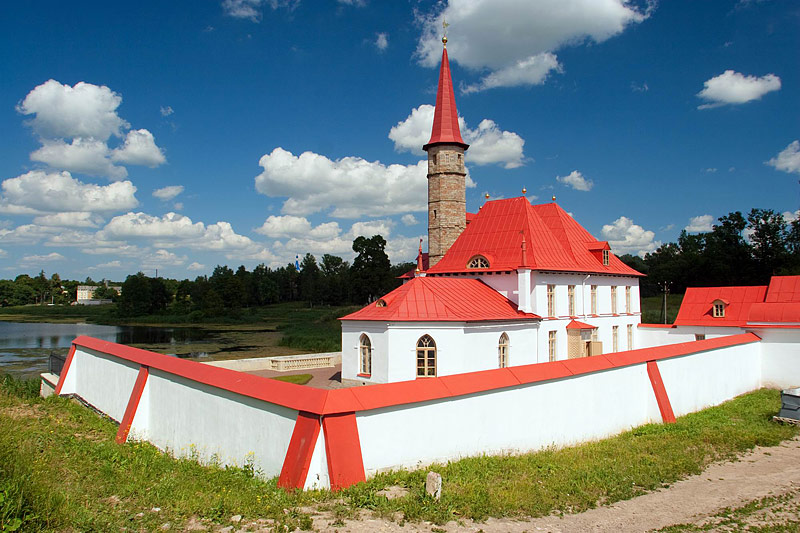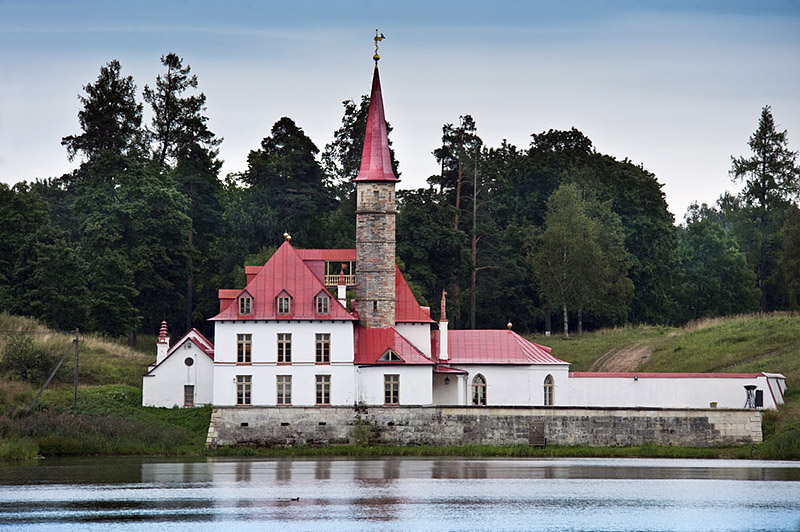Priory Palace
An extraordinary building that resembles a Gothic country church more than a palace, the Priory Palace was the result of Paul's abiding relationship with the Knights Templar of the Maltese Order of St. John. Compelled to leave Malta by Napoleon, the Knights turned to Russia, with whom they had been allied during the Turkish Wars of Catherine the Great's reign, for assistance and protection. Paul, although officially Russian Orthodox, agreed to take the order under his patronage and, in 1798, assumed the title of Grand Master.

The Priory Palace was intended to be used as a priory for the knights under the auspices of Prince Conde, a French prior of the order who had entertained and impressed Paul during his travels in Europe. Although the Prince never came to Gatchina, and the palace was never officially turned into a priory, the building became the site of meetings for the Order.
Built by Nikolai Lvov, and completed in 1799, the building sits on the banks of the Black Lake at the Eastern edge of the park, surrounded by hills and forest. Lvov's unique creation is a mixture of pseudo-Gothic and Old Russian church architecture, its simple undecorated facades, with white walls and bright red roofs, crowned by a slender octagonal tower. The view of the building reflected in the waters of the Black Lake, with towering fir trees behind it, is particularly effective.

The Priory Palace later became the home of the court choristers, and then the master of the Royal Hunt during the reign of Nicholas I. During the First World War, the palace was used as a hospital and, under the Soviets, it was used as a House of Pioneers and then a museum of local history. Although the palace, thanks to Lvov's unusual use of rammed earth, survived Nazi attempts to mine it, by the late 1970s it was almost derelict. Restoration work has returned the building to an approximation of its former glories, and it is now possible to access the 30-meter tower, which gives superb views over the park and Grand Palace.
| Open: | June 15 to August 31: Daily, 10 am to 7 pm. Last admission is at 6 pm. Closed on July 7 and August 4. September 1 to June 14: Daily, 10 am to 6 pm. Last admission is at 5 pm. Closed on Monday and the first Tuesday of each month. |
|---|---|
| Admission: | Adult: RUB 120.00 Children: RUB 60.00 |
| Photo and video: | RUB 100.00. Audio-guide: RUB 200.00 |
| Accessibility note: | Sorry, this museum is not wheelchair accessible. |

